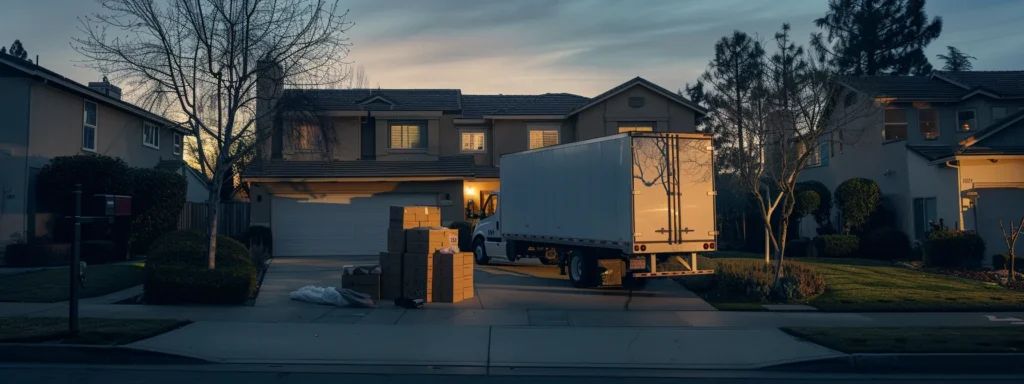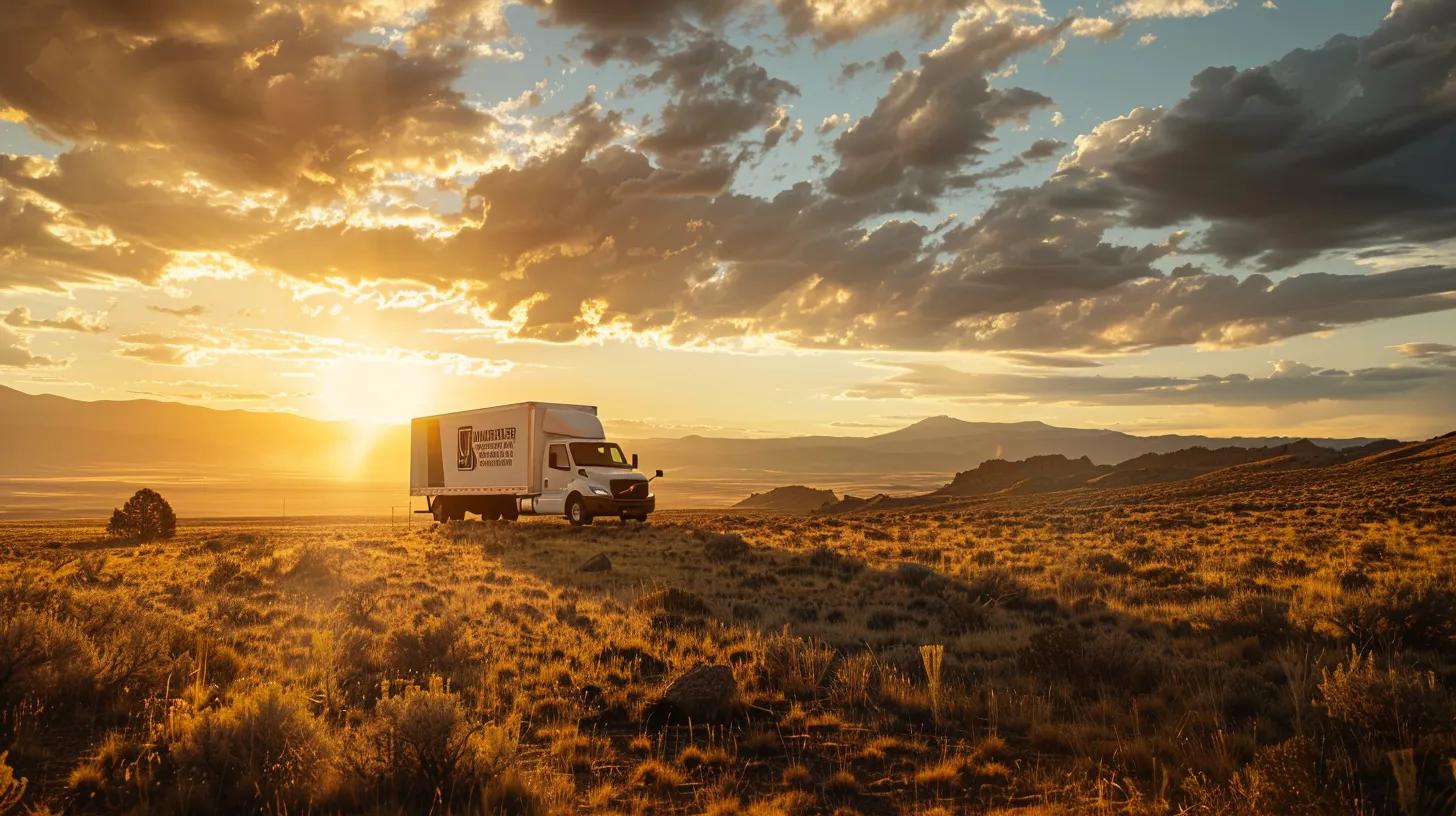Table Of Contents:
- Comprehensive Guide: Essential Steps for Planning Your Interstate Move
- Understanding the Scope of Your Interstate Move
- Estimating Distance and Travel Time
- Navigating State Regulations and Requirements
- Calculating and Preparing Your Moving Budget
- Creating Your Essential Interstate Moving Checklist
- Creating Your Essential Interstate Moving Checklist
- Establishing a Realistic Moving Timeline
- Inventorying and Documenting Your Belongings
- Deciding Between DIY and Professional Movers
- Researching and Selecting Reliable Moving Companies
- Organizing and Decluttering Your Home Before the Move
- Sorting Items to Keep, Donate, or Discard
- Hosting a Sale or Donating to Charity
- Disposing of Hazardous or Non-Movable Items
- Packing Effectively for a Long-Distance Move
- Gathering Quality Packing Supplies
- Labeling Boxes for Easy Unpacking
- Protecting Fragile and Valuable Items
- Preparing an Essentials Box for Arrival Day
- Managing Logistics and Essential Documentation
- Updating Your Address With Important Entities
- Transferring or Setting Up Utilities and Services
- Securing Appropriate Insurance Coverage
- Organizing Necessary Travel and Moving Documents
- Settling Into Your New Home Successfully
- Unpacking Strategically Room by Room
- Setting Up Essential Services and Utilities
- Familiarizing Yourself With the New Neighborhood
- Registering Vehicles and Obtaining Local Licenses
Comprehensive Guide: Essential Steps for Planning Your Interstate Move
Planning an interstate move can feel overwhelming, especially when it comes to managing your household goods and estimating moving costs. In this comprehensive guide, I’ll walk you through essential steps like creating a moving checklist and packing effectively for long-distance travel. By addressing common challenges such as organizing your home and managing public utility transfers, you will gain clarity and confidence in your move. With the right information, including how to use a moving cost calculator and understanding fees, you can make your transition smoother than ever.
Understanding the Scope of Your Interstate Move
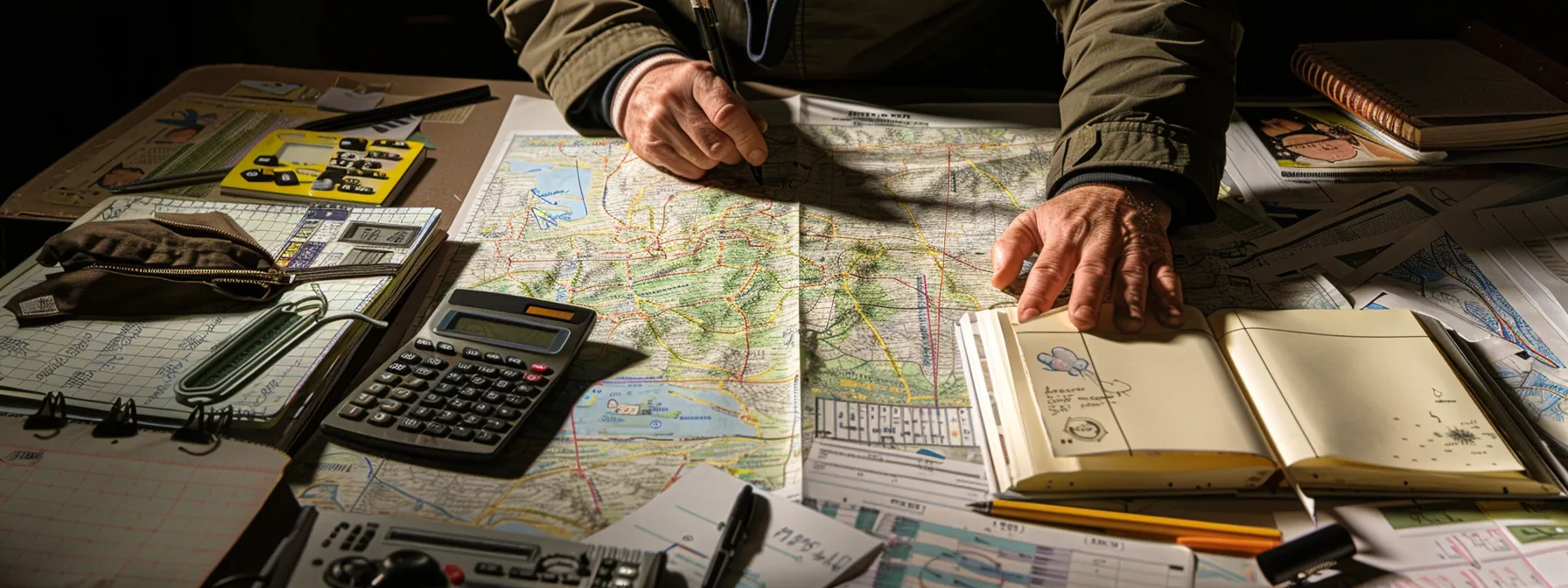
To effectively prepare for your interstate move, it’s crucial to estimate the distance and travel time involved, ensuring you know what to expect. Additionally, I’ll guide you through navigating state regulations and requirements that may impact your relocation. Finally, we’ll focus on calculating and preparing your moving budget, allowing you to make informed decisions about your logistics. Understanding these elements will help you utilize our white glove moving services, ensuring excellent customer service along the way. For further information, you can visit the FMCSA Website.
Estimating Distance and Travel Time
Estimating the distance and travel time for your interstate Long Distance Moving move is critical for smooth logistics. As a moving industry expert, I recommend starting by using online mapping tools from the FMCSA Website to calculate the exact mileage and expected travel duration. This becomes especially important when choosing between different Expedited long-distance moving companies, as they may vary in their response times based on distance and road conditions. A detailed estimate not only helps you prepare but also allows you to communicate effectively with your movers, ensuring they understand your needs and can accommodate your schedule:
- Identify the brands of movers you are considering.
- Check their consumer reviews and licenses.
- Discuss your distance and timeframe with your chosen moving company.
- Plan for additional time for breaks or unexpected delays.
Navigating State Regulations and Requirements
Navigating state regulations and requirements for your interstate move is a key aspect of ensuring everything goes smoothly. Each state has different laws regarding moving logistics, especially with long distance movers, so I recommend checking the specific rules that apply to your destination. For instance, if you plan to hold a garage sale before your move, some states may require permits or have restrictions that could affect your plans. Additionally, working with reputable international van lines can simplify this process, as they are well-versed in compliance and can assist with any necessary documentation, ensuring that your van arrives without complications.
Calculating and Preparing Your Moving Budget
Calculating and preparing your moving budget is vital when you decide to move interstate. I recommend creating an inventorychecklist that includes all your belongings, as this will help you estimate the total weight of your items, which directly influences your moving costs. Understanding all potential expenses, from packing materials to transportation fees, will allow you to plan accordingly, ensuring you have a clear picture of your financial needs during this transition.
Now that you grasp the details of your interstate move, it’s time to get organized. A well-crafted checklist can turn the chaos into calm, making your journey smoother ahead.
Creating Your Essential Interstate Moving Checklist
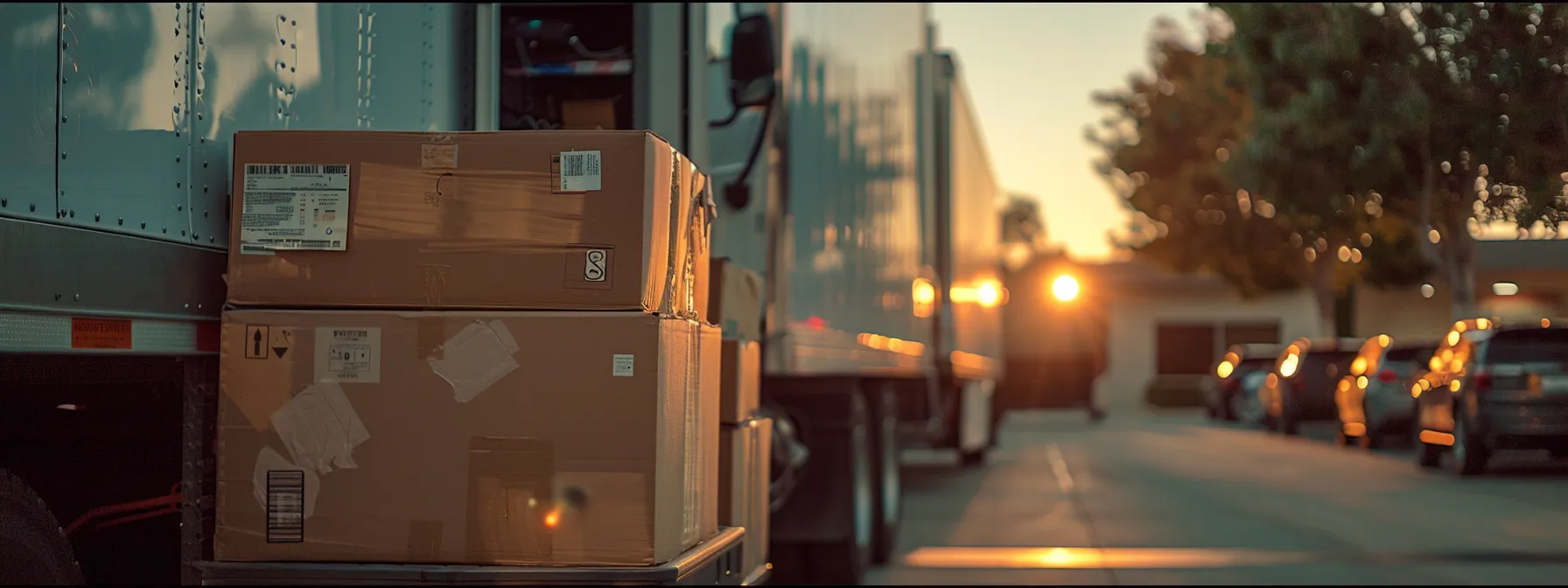
Creating Your Essential Interstate Moving Checklist
Establishing a realistic moving timeline is crucial for a successful interstate move. I emphasize the importance of inventorying and documenting your belongings to keep track of everything. You’ll also need to decide between a DIY approach and hiring a professional moving company, such as an experienced state moving company or trusted options like Allied Van Lines, known for their customer satisfaction and solid reputation. Lastly, thorough research on reliable moving companies will set a strong foundation for your relocation.
Establishing a Realistic Moving Timeline
Establishing a realistic moving timeline is critical for a successful interstate move. I recommend pinpointing significant milestones, such as confirming your moving broker, reviewing your insurance policy, and addressing financial aspects like credit implications for your move. Additionally, consider implementing the “Marie Kondo” method to simplify your packing process, which can save time and reduce clutter. Don’t overlook recycling items you no longer need to promote sustainability during this transition.
| Milestone | Action | Deadline |
|---|---|---|
| Confirm Broker | Choose a reputable moving broker | 8 weeks before move |
| Review Insurance Policy | Check coverage details and requirements | 6 weeks before move |
| Credit Preparations | Assess financial readiness and credit options | 4 weeks before move |
| Declutter | Apply Marie Kondo method and recycle items | 3 weeks before move |
| Finalize Logistics | Confirm moving dates and details with the company | 2 weeks before move |
Inventorying and Documenting Your Belongings
When preparing for your interstate move, inventorying and documenting your belongings is a crucial step that can greatly enhance your moving experience. I recommend creating a detailed list of all items you plan to transport, noting their condition and value. This not only helps in coordinating with your professional moving company or removalists, ensuring they are aware of everything that needs to be moved, but also provides you with peace of mind when evaluating the specific interstate moving services you may require for this journey.
Deciding Between DIY and Professional Movers
When deciding between a DIY approach and hiring professional movers for your interstate move, it’s essential to evaluate the total expense involved. While handling the move on your own may seem cost-effective, factoring in costs such as fuel, moving supplies, and potential damages to your property can quickly add up. Interstate moving companies often provide transparent contracts that outline their services, which can save you time and stress while ensuring the safety of your belongings during transit.
- Assess your moving budget and research interstate moving costs.
- Consider the effort and time required for a DIY move.
- Evaluate the benefits of hiring professional movers to handle logistics.
- Review contracts and services offered by various interstate moving companies.
- Make a decision based on your personal needs and situation.
Researching and Selecting Reliable Moving Companies
Researching and selecting reliable moving companies is a crucial step in your interstate move. In the moving industry, it’s essential to consider companies that have a solid reputation and proven track record, such as United Van Lines. Utilize online reviews and customer feedback to gauge service quality and reliability, ensuring that your cargo is handled with care over the distance you plan to travel.
- Check reviews from previous customers.
- Verify company credentials and registration.
- Request estimates and compare services offered.
- Inquire about insurance options for your cargo.
- Understand their experience with long-distance moves.
You’ve crafted your checklist, and now it’s time to take a hard look at your belongings. Organizing and decluttering your home not only eases the move but lightens your load for the journey ahead.
Organizing and Decluttering Your Home Before the Move

Before my interstate move, sorting items into categories such as keep, donate, or discard significantly eased the process. I found hosting a sale helpful for the items I no longer needed, while donating to charity made the transition feel meaningful. Furthermore, I made sure to dispose of any hazardous or non-movable items due to the requirements set by professional moving companies. This preparation streamlined my interaction with interstate movers and simplified logistics on moving day.
Sorting Items to Keep, Donate, or Discard
When sorting items to keep, donate, or discard, I recommend approaching the process with a clear strategy to reduce stress and manage your belongings effectively. Start by categorizing items based on their importance and usability in your new home. For example, items like seasonal clothing or appliances can often be unnecessary during the moving process and might be better suited for donation or disposal. This decision not only reduces clutter but also ensures you’re compliant with any laws regarding the transport of certain items when working with an interstate moving company:
- Assess your belongings by room to identify what you truly need.
- Consider the cost of living in your new location and how it may affect your budget.
- Utilize community resources for donations to help others while decluttering.
- Disposal of hazardous materials needs to follow local law to avoid fines.
Hosting a Sale or Donating to Charity
When I was preparing for my own move, hosting a sale turned out to be an effective way to declutter and make some extra cash. I advertised my sale on local online platforms, providing my telephone number for easy contact. Additionally, donating items to charity not only lightened my load but also served a meaningful purpose, as many organizations have specific customs for accepting goods, making the process straightforward. These tips have helped me maximize the value of my belongings while ensuring a more manageable moving experience.
Disposing of Hazardous or Non-Movable Items
When preparing for moving day, it’s essential to safely dispose of hazardous or non-movable items. I strongly advise checking local regulations about items such as paint, chemicals, and batteries, as they often require special handling. For example, many moving companies and van lines won’t transport these materials due to safety concerns, which can add unexpected moving costs if not handled beforehand; disposing of them can prevent complications when navigating stairs or tight spaces on the day of the move. It’s worth checking the Better Business Bureau to find recycling centers or disposal facilities near you that manage hazardous waste properly:
| Item Type | Disposal Method | Notes |
|---|---|---|
| Paint | Local hazardous waste center | Check for events; some have designated collection days. |
| Chemicals | Contact local waste management | Do not pour chemicals down drains; it’s illegal. |
| Batteries | Recycling locations | Many electronics stores offer battery recycling. |
| Appliances | Professional disposal services | Check if your moving company can help with disposal. |
With your home organized and clutter gone, the real challenge begins. Packing effectively for a long-distance move will require strategy and care, but the reward is worth it.
Packing Effectively for a Long-Distance Move
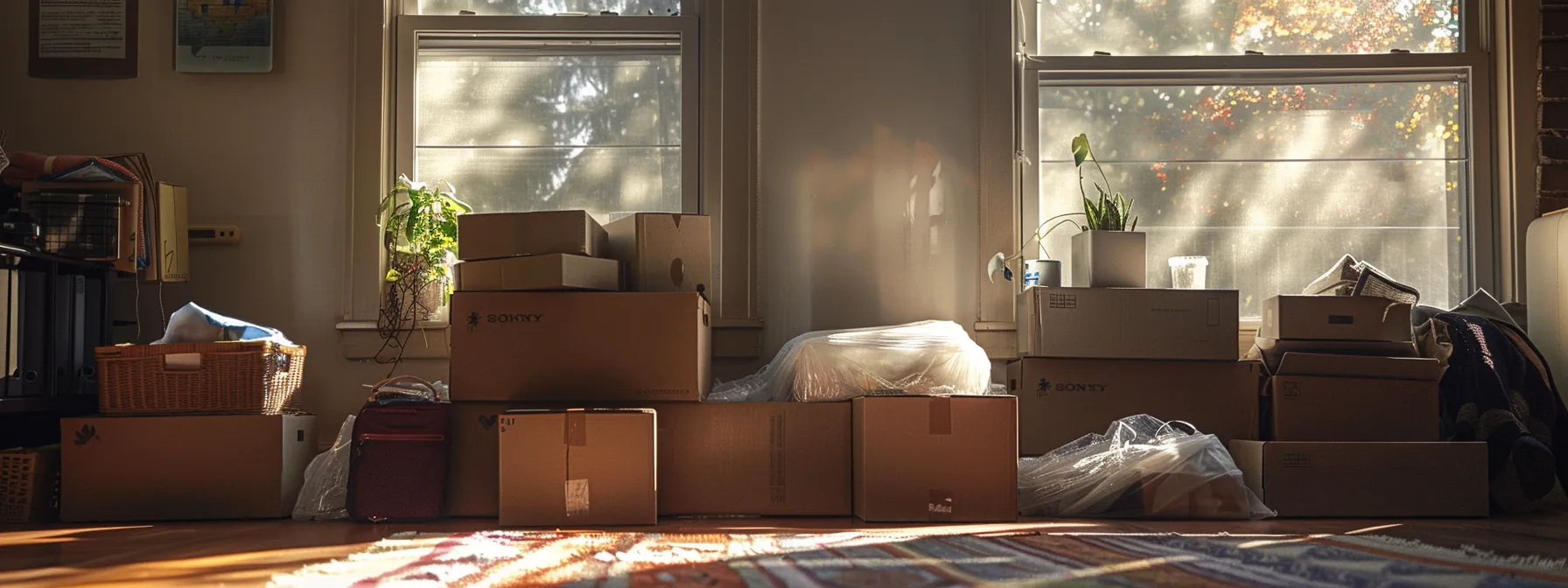
Gathering quality packing supplies is the first step in ensuring a successful long-distance move. I emphasize the importance of using sturdy boxes, bubble wrap, and other materials to protect your belongings. Properly labeling each box enhances accessibility during unpacking, while special attention must be given to fragile and valuable items. Additionally, preparing an essentials box will streamline your arrival day, keeping important documents and necessities close at hand.
Gathering Quality Packing Supplies
When preparing for an interstate move, gathering quality packing supplies is paramount. I recommend sourcing sturdy boxes that can withstand the rigors of travel, particularly if you own antiques that require extra protection during transit. Companies like American Van Lines and North American Van Lines provide comprehensive moving kits which often include essential materials, such as packing tape and bubble wrap, at competitive prices. Additionally, understanding guidelines from the Federal Motor Carrier Safety Administration can help ensure your items, especially fragile ones, are packed in accordance with safety regulations, safeguarding your belongings throughout the journey.
Labeling Boxes for Easy Unpacking
Labeling boxes effectively is a crucial part of packing for an interstate move. It not only reduces the risk of losing items but also helps prevent damages during handling. I recommend using clear labels that indicate the contents of each box and their designated rooms in your new home. This method makes it easier to unpack strategically, saving you time and minimizing stress as you settle in. Consider including information like “fragile” for delicate items and ensuring your landlord understands the moving process—this can also factor into any security deposit discussions, especially regarding damages during the transition:
| Label Type | Description | Example |
|---|---|---|
| Room Designation | Indicates where the box should go in the new home | Kitchen, Living Room |
| Content Description | Lists the primary items in the box | Dishes, Books |
| Fragile | Identifies boxes that contain breakable items | Glassware |
| Tax and Legal | Highlights important documents related to your move | Lease, Tax forms |
Protecting Fragile and Valuable Items
When it comes to protecting fragile and valuable items during an interstate moving process, my experience has taught me the importance of using quality packing materials and proper techniques. I recommend wrapping delicate items in bubble wrap and securing them in sturdy boxes with adequate cushioning, as this can prevent damage while in transit. Additionally, I recommend considering moving insurance options, like valuation and liability insurance, to safeguard your belongings; having that extra layer of protection can help ease any concerns about potential losses or complaints that may arise during the move.
Preparing an Essentials Box for Arrival Day
Preparing an essentials box for arrival day is vital to making your transition into your new home seamless and stress-free. I recommend including key items such as personal documents, important contact information, and essentials for your first day—like toiletries, clothes, and snacks. If you have a long-distance moving policy or specific requests regarding your motor vehicle, make sure those documents are easily accessible in your essentials box, and consider using a mobile app to manage your checklists for organized unpacking.
| Essential Item | Description | Reason for Inclusion |
|---|---|---|
| Toiletries | Items like toothbrush, toothpaste, and soap | Immediate access upon arrival |
| Important Documents | Lease agreements, moving policy details | Safety and compliance during the move |
| Chargers | Chargers for phones and other devices | Stay connected as you settle in |
| Medications | Any required medications or prescriptions | Ensure health needs are met right away |
| Snacks and Water | Light snacks and bottled water | Keep energy levels up during unpacking |
Packing is only part of the journey. Next, we’ll tackle the logistics and essential documentation that keep your move on course.
Managing Logistics and Essential Documentation
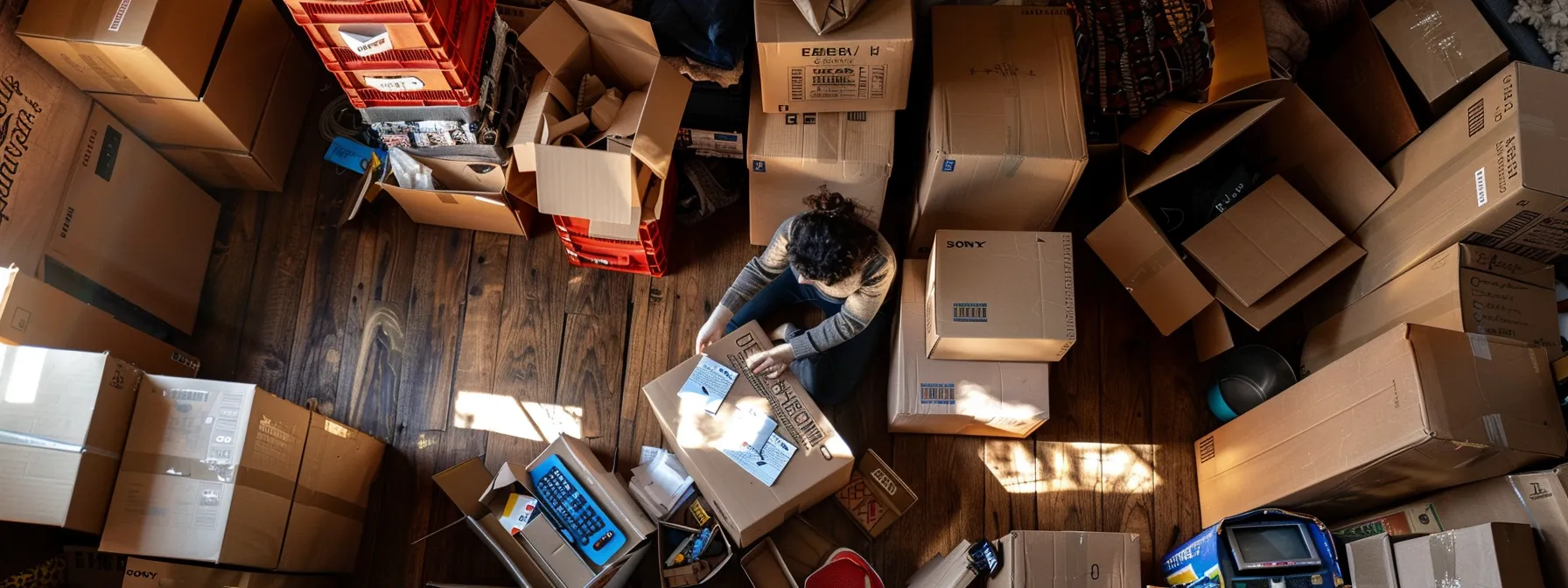
For a smooth interstate move, I always prioritize managing logistics and essential documentation. First, updating your address with important entities ensures that your mail and services reach you promptly. I also recommend transferring or setting up utilities and services in your new home ahead of time. Additionally, securing appropriate insurance coverage and organizing necessary travel documents will provide peace of mind as you navigate this transition. In the upcoming sections, I’ll delve deeper into each of these crucial steps to ensure your move is as seamless as possible.
Updating Your Address With Important Entities
Updating your address with important entities is an essential step in managing logistics during your interstate move. I always recommend contacting your estate agent to ensure that your rental agreements reflect your new address, as well as checking with your utility providers to transfer or establish services in your new location. Additionally, conducting thorough research to update your address with banks, credit card companies, and subscription services can prevent disruptions and keep your communication seamless during this transition.
Transferring or Setting Up Utilities and Services
Transferring or setting up utilities and services is a critical part of your interstate move that ensures a smooth transition into your new home. As I prepared for my recent relocation, I prioritized contacting utility providers like electricity, gas, water, and internet companies well ahead of time. This proactive approach not only helped avoid service interruptions but also allowed me to manage costs effectively, including any initial cash deposits required for new service setups. Having these arrangements in place before my arrival made settling in much more manageable and stress-free.
| Utility/Service | Action Required | Notes |
|---|---|---|
| Electricity | Contact provider to transfer service | Schedule transfer for the day of arrival |
| Gas | Set up new service or transfer existing | Ensure gas appliances are checked for safety |
| Water | Contact water utility for service initiation | Check for local regulations on new accounts |
| Internet | Schedule installation with your provider | Consider package details to match your needs |
| Cable/TV | Transfer or sign up for new services | Inquire about cash promotions for new customers |
Securing Appropriate Insurance Coverage
Securing appropriate insurance coverage is a critical step in managing logistics during your interstate move. As someone who has navigated this process, I highly recommend reviewing both the basic liability coverage offered by your moving company and considering additional options that may better protect your belongings. This extra layer of insurance can provide peace of mind, particularly for high-value items, setting clear expectations and ensuring you’re prepared for any unforeseen circumstances along the journey.
Organizing Necessary Travel and Moving Documents
Organizing necessary travel and moving documents is a critical step that I never overlook during my interstate moves. I ensure that I have all essential documents, such as identification, moving contracts, and insurance papers, readily accessible. This practice not only streamlines the process but also mitigates potential issues when dealing with moving companies, ensuring that everything runs smoothly from start to finish:
| Document Type | Description | Importance |
|---|---|---|
| Identification | Driver’s license or passport | Required for verification and services |
| Moving Contracts | Contracts with moving companies | Outline services and costs |
| Insurance Papers | Details of coverage for your belongings | Peace of mind for high-value items |
| Medical Records | Records for you and your family | Ensure continuity of care after the move |
You have secured your plans and gathered the papers. Next, it’s time to breathe life into your new space and make it truly yours.
Settling Into Your New Home Successfully

Unpacking strategically room by room will ensure that I make the most of my new space. Next, I will focus on setting up essential services and utilities, which are crucial for a seamless transition to my new home. Familiarizing myself with the neighborhood will help me settle in comfortably. Finally, registering my vehicles and obtaining local licenses is necessary for compliance and convenience. Each of these steps plays a vital role in ensuring a smooth settling process.
Unpacking Strategically Room by Room
Unpacking strategically room by room is essential for settling into my new home after an interstate move. I find it most efficient to start with the rooms I will use immediately, such as the kitchen and bedrooms, as this allows for a smoother transition into daily life. By organizing my unpacking based on function and importance, I can prioritize my needs and reduce the overwhelming feeling of chaos that often accompanies a move:
| Room | Action | Importance |
|---|---|---|
| Kitchen | Unpack essential cookware and dishes | Needed for preparing meals quickly |
| Bedroom | Set up the bed and unpack clothing | Ensures comfort and a good night’s sleep |
| Living Room | Arrange furniture and unpack entertainment items | Creates a welcoming space for relaxation |
| Bathrooms | Organize toiletries and essentials | Critical for maintaining daily hygiene |
Setting Up Essential Services and Utilities
Setting up essential services and utilities is a vital part of settling into my new home after an interstate move. I recommend contacting utility providers for electricity, water, gas, and internet well in advance to ensure that services are up and running on arrival day. By scheduling transfers or new installations ahead of time, I can avoid any interruptions and make the transition much smoother, allowing me to focus on unpacking and enjoying my new space. Here’s a quick overview of the key services I prioritize during this process:
| Utility/Service | Action Required | Notes |
|---|---|---|
| Electricity | Contact provider to transfer service | Schedule transfer for the day of arrival |
| Gas | Set up new service or transfer existing | Ensure gas appliances are checked for safety |
| Water | Contact water utility for service initiation | Check for local regulations on new accounts |
| Internet | Schedule installation with your provider | Consider package details to match your needs |
Familiarizing Yourself With the New Neighborhood
Familiarizing myself with the new neighborhood has been an essential part of settling in after my interstate move. I recommend taking leisurely walks around the area to discover local shops, parks, and other amenities while meeting neighbors along the way. Engaging with community events or joining local social media groups can also provide valuable insights and make the transition smoother, as it helps me understand the resources and services available to support my new lifestyle.
Registering Vehicles and Obtaining Local Licenses
When I moved to my new state, registering my vehicles and obtaining local licenses became essential steps in ensuring compliance and convenience. I quickly learned that each state has different regulations and deadlines, so I made it a priority to gather all necessary documentation, such as proof of residency and vehicle registration details, to streamline the process. By visiting the local Department of Motor Vehicles (DMV) as soon as I arrived, I avoided delays and ensured my vehicles were legally registered, allowing me to focus on settling into my new home without any worries about legal restrictions.

